#virtual reality application
Explore tagged Tumblr posts
Text
Difference between Augmented Vs Virtual Reality
Augmented reality (AR) and virtual reality (VR) are evolving more and more appropriately nowadays. Both technologies keep so much in standard while also existing very different. So, in this article, we will try to describe the difference between AR and VR.
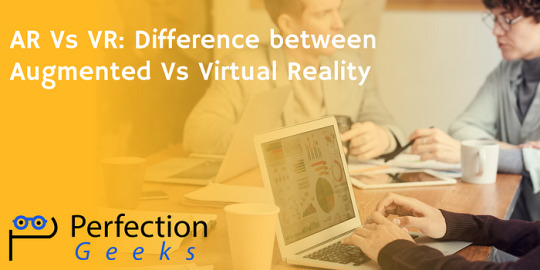
AR and VR are technologies best defined as immersive 3-D experiences employing advanced devices. Despite using the same technology and hardware, both are quite diverse in terms of experiences and use points.
The difference between VR and AR reaches down to virtual and real-world environments. AR utilizes a real-world setting while VR is an entirely virtual world. VR often requires a headset appliance, but AR can be accessed even with a smartphone. AR can even incorporate virtual and real-world, while VR is just limited to a fictional fact.
What is Augmented Reality (AR)?
Augmented Reality (AR) is a digitally improved version of reality where users can interact with computer interfaces similar to a smartphone or an app. It incorporates both the real and virtual elements to give a real-time interactive experience between both worlds.
Suppose a computer UI screen appears in front of your eyes, working the same way as your smartphone. This kind of relation between the real and virtual world is the importance of AR. The most famous instances would be the Snapchat AR filters and Pokémon GO.
What is Virtual Reality (VR)?
Virtual Reality is a computer-generated background that people can share through sensory stimulation, i.e., visual and auditory, making the surroundings immersive and real. In VR, you can experience a dream world or travel the world from the convenience of your home.
VR technology needs a lot of elements to function. For example, you’ll require a VR Headset, controllers to interact with the environment, and a device that can take the processing power required to run VR applications.
Virtual Reality comes from the importance of “virtual” and “reality.” In layman’s terms, it involves experiencing things that only exist in a computer simulation. Also, you could call it an illusion if you liked.
When virtual reality and augmented reality were first introduced?
While primitive virtual reality techniques got their beginning in the 1950s and 1960s, the ideas of VR and AR started to achieve momentum in military applications during the early 1980s. Motion graphics such as Tron, The Matrix, and Minority Report all offered futuristic riffs on how these technologies would evolve in the years to arrive.
The first mainstream attempt at emitting a VR headset was the Sega VR in 1993, an add-on to the Sega Genesis gaming system. While it never pushed it to market, it did stoke customer appeal in the technology. It would not be until the Oculus Rift in 2010 that a VR headset would be victorious with a customer audience — though today these machines remain costly and largely of niche interest, gaming-focused users.
Augmented reality splintered from the virtual reality around 1990, and was carried to the public’s attention in 1998 when TV broadcasters started overlaying a yellow line on the football field to sufficiently show the distance to a first down. Over the next era, several apps around AR technology were designed for both military use (such as in fighter jet cockpits) and user, when print magazines and packaged goods started embedding QR codes that could be scanned with a customer cell phone, making the product “come alive” with a short 3D video.
In 2014, Google moved out of Google Glass, to provide everyone with a head-mounted display AR device. The AR headset, which was controlled through voice and touch gestures, was met with skepticism and criticism, attributed to the new reality that people were recording video 24/7 in public. Privacy unexpectedly became a major talking point in customer AR. Google ultimately suspended the project and relaunched it a few years later with business users in mind.
How do AR works?
AR uses computer vision, mapping as well as depth tracking to present appropriate content to the user. This functionality allows cameras to gather, send, and process information to show digital content appropriate to what any user is looking at.
In Augmented reality, the user’s physical environment is increased with contextually relevant digital content in real-time. You can experience (AR) augmented reality with a smartphone or with certain hardware.
How do VR work?
The focus of virtual reality is on affecting the vision. The user requires to put a VR headset screen in front of his/her eyes. Therefore, stopping any relations with the real world. In VR, two lenses are fixed between the screens. The user requires to adjust eyes based on the individual action of the eye and its positioning. The graphical illustrations on the screen can be rendered by using an HDMI cable connected to a PC or mobile phone.
Uses speakers, goggles, and sometimes handheld wearables to simulate a real-world experience. In virtual reality, you can also engage visual, haptic (touch) stimulation, and auditory, so the constructed reality is immersive.
The distinction between Virtual Reality (VR) and Augmented Reality (AR)
Here are the most important distinctions between Augmented Reality (AR) and Virtual Reality (VR):
Augmented Reality (AR)
• The method augments the real-world scene
• In AR Users consistently have a sense of existence in the real world
• AR is 25% virtual and 75% real
• This technology partly engages the user in the action
• AR needs upwards of 100 Mbps bandwidth
• No AR headset is required.
• With AR, end-users are even in touch with the real world while interacting with virtual objects nearer to them.
• It is used to enhance both virtual and real worlds.
Virtual Reality (VR)
• The fully immersive virtual environment
• In VR, visual senses are under the command of the system
• VR is 75% virtual and 25% real
• This technology completely immerses the user into the action
• VR needs at least a 50 Mbps connection
• Some VR headset device is required.
• By using VR technology, the VR user is disconnected from the real world and immerses himself in a completely fictional world.
• It is used to improve fictional reality for the gaming world.
Advantages of Augmented Reality (AR)
Here are the pros/benefits of Augmented Reality:
• Presents individualized learning
• Fostering the learning method
• A vast variety of areas
• Offers creation and continuous advancement
• Improve accuracy
• Augmented reality can be used to improve user knowledge and data.
• People can share experiences over long distances.
• Helps developers to create games that offer a “real” experience to the user.
Advantages of Virtual Reality (VR)
Here are the pros/benefits of Virtual Reality:
• Immersive learning
• Make an interactive environment
• Improve work capabilities
• Deliver convenience
• One of the most important benefits of VR is that it helps you to make a realistic world so that the user can explore the world.
• Virtual reality in the teaching field makes education easy and comfortable
• Virtual reality authorizes users to test with an artificial environment.
Disadvantages of Augmented Reality
Here are the cons/drawbacks of Augmented Reality:
• It is costly to execute and develop AR technology-based projects and to keep them.
• The absence of privacy is a major drawback of AR.
• The low-performance level of AR devices is a major drawback that can occur during the testing stage.
• Augmented reality can generate mental health problems.
• Lack of protection may affect the overall augmented reality principle.
• Extreme engagement with AR technology can guide major healthcare problems such as eye issues and obesity etc.
Disadvantages of Virtual Reality
Here are the cons/drawbacks of Virtual Reality:
• VR is evolving much more familiar, but programmers will never be able to interact with virtual environments.
• Escapism is unremarkable among those that use VR environments, and people begin living in the virtual world instead of dealing with real-world problems.
• Training with a virtual reality environment never has the same outcome as training and working in the real world. This means if somebody has done well with simulated tasks in a VR environment, there is still no guarantee that a person doing well in the real world.
Applications of Augmented Reality (AR)
Here are the major applications of AR technology:
• AR apps are being created that embed text, images, videos, etc.
• The printing and advertisement industries are using AR technology apps to display digital content on top of real-world magazines.
• AR technology authorizes you the evolution of translation apps that allows you to interpret the text in other languages for you.
• With the help of the Unity 3d Engine tool, AR is being used to create real-time 3D Games.
Applications of Virtual Reality (VR)
Here are the major applications of VR:
• VR technology is used to create and improve a fictional reality for the gaming world.
• VR can use by the military for flight simulations, battlefield simulations, etc.
• VR is employed as a digital training machine in many sports to help to calculate a sports person’s performance and examine their techniques.
• It is also becoming a primary way of treating post-traumatic stress.
• Using VR devices such as Google Cardboard, Oculus Rift, HTC Vive, users can be transported into real-world and imaginary environments like squawking penguin colonies or even the back of a dragon.
• VR technology offers a safe environment for patients to come into contact with things they fear.
• Medical students use VR to practice techniques
• Virtual patients are utilized to help students to acquire skills that can later be applied in the real world.
How do AR and VR work together?
It will be incorrect to express that Augmented Reality and Virtual Reality are intended to work separately. They mostly agreed to develop an enhanced engaging experience when these technologies are merged to transport the user to the fictional world by giving a new measurement of the interaction between the real and virtual world.
#virtual reality#Virtual Reality application#iot application services#web development#android application development#data visualization#artificial intelligence#mobile app design services#machine learning#perfectiongeeks
0 notes
Text
Empower Your Digital Presence with Cutting-Edge Frameworks
In today’s fast-evolving digital landscape, staying ahead requires more than just a functional website or application—it demands innovation and efficiency. At Atcuality, we specialize in Website and Application Framework Upgrade solutions tailored to your business goals. Whether you're looking to optimize performance, enhance user experience, or integrate the latest technologies, our team ensures seamless upgrades that align with industry standards. Transitioning to advanced frameworks not only improves loading speeds and scalability but also strengthens your cybersecurity measures. With Atcuality, you gain access to bespoke services that future-proof your digital assets. Let us elevate your online platforms to a new realm of excellence.
#ai applications#artificial intelligence#ai services#website development#website developer near me#website developers#website developer in india#web development#web design#application development#app development#app developers#digital marketing#seo services#seo#emailmarketing#search engine marketing#search engine optimization#digital consulting#virtual reality#vr games#vr development#augmented reality#augmented and virtual reality market#cash collection application#task management#blockchain#metaverse#cloud computing#information technology
5 notes
·
View notes
Text
WordPress Security Services Tailored to Your Business Needs
Atcuality understands that every WordPress website has unique security needs. Our specialized WordPress security services provide customized solutions to safeguard your website from malicious attacks, unauthorized access, and technical vulnerabilities. Whether you own a blog, corporate website, or online store, our comprehensive approach includes malware scanning, vulnerability patching, firewall implementation, and site backups. Atcuality’s team of security professionals works tirelessly to monitor and eliminate threats before they can impact your business. With advanced tools and strategies like SSL encryption and uptime monitoring, we ensure your website operates securely while maintaining peak performance. Cyber threats evolve daily, but with Atcuality, you can stay one step ahead. Don’t let your website become a target—secure your site and maintain customer trust with our proven WordPress security solutions.
#seo marketing#seo services#artificial intelligence#digital marketing#iot applications#seo company#seo agency#amazon web services#azure cloud services#ai powered application#ai applications#ai app development#virtual reality#vr development#vr games#wordpress#web developers#web development#web design#web developing company#website developer near me#wordpress development#web hosting#website#augmented and virtual reality market#augmented human c4 621#augmented intelligence#augmented reality#iot#iotsolutions
3 notes
·
View notes
Video
tumblr
an average day at AR House - me (left) working with Adriana Vecchioli (right) on an augmented reality jungle, while a musician plays piano using an AR overlay app in the background
#figmin xr#artists on tumblr#reality mixer#pianovision#art#digital art#3d art#vr#virtual reality#augmented reality#every single one of us wearing headsets lmao#pianovision (the ar piano app) is really cool#every time i go to the house and see dave using it his piano skills have improved incredibly#and the improvements have been over the course of just like... maybe a month or two?#it's very sci fi seeing him hit all the keys while wearing a headset#but yeah!! real life applications of AR being used to improve skills!! and to make learning art more accessible!!!
22 notes
·
View notes
Text
#theintellify#mobile application development#web application development#cloud consulting services#augmented reality#virtual reality#ar vr technology#arvr#ar vr development company#ar vr development services
2 notes
·
View notes
Text
Empowering Businesses with AR Technology - Atcuality
Atcuality is at the forefront of innovation, delivering Augmented Reality Development Services that empower businesses to achieve more. By integrating AR into your operations, you can revolutionize product demonstrations, training sessions, and customer engagement strategies. Our solutions are designed to provide real-time interactivity, allowing users to visualize and interact with digital elements in their physical environments. Whether you need AR for retail, gaming, or enterprise applications, we tailor our services to meet your specific goals. With a focus on creativity and functionality, we ensure that your AR solutions not only meet but exceed expectations. Discover how Atcuality can help you unlock new dimensions of growth with AR technology.
#search engine marketing#search engine optimisation company#emailmarketing#search engine optimization#seo#search engine ranking#digital services#search engine optimisation services#digital marketing#seo company#seo marketing#seo services#seo expert#on page seo#social media marketing#retrieval augmented generation#augmented and virtual reality market#augmented intelligence#augmented reality#ar vr technology#virtual reality#online marketing#mobile marketing#cash collection application#website development#web hosting#web design#website#web development#website developer near me
0 notes
Text
Immersive Technologies: Revolutionizing the Future of Engagement
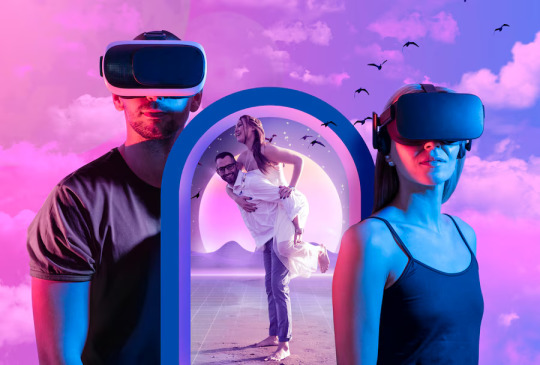
In a rapidly advancing digital age, immersive technologies are taking center stage as the driving force behind transformative experiences across industries. From education to entertainment and healthcare, these technologies, including augmented reality (AR), virtual reality (VR), and mixed reality (MR), are redefining how we interact with the digital and physical worlds.
What Are Immersive Technologies?
Immersive technologies are innovations that blend the digital and physical worlds to create highly interactive experiences. They engage users by overlaying digital elements in the real world (AR), transporting users to entirely virtual environments (VR), or combining elements of both (MR). These technologies rely on advanced hardware and software systems to provide realistic and engaging experiences.
Key Components of Immersive Technologies
Augmented Reality (AR): Enhances the real-world environment with digital overlays. Commonly used in applications like retail try-ons, gaming, and navigation.
Virtual Reality (VR): Immerses users in a fully digital environment, ideal for gaming, training simulations, and virtual tours.
Mixed Reality (MR): Merges real and virtual worlds to produce new environments and visualizations, enabling users to interact with both simultaneously.
Extended Reality (XR): An umbrella term encompassing AR, VR, and MR, representing the full spectrum of immersive experiences.
The Growing Impact of Immersive Technologies
1. Education and Training
Immersive technologies are revolutionizing education by making learning interactive and engaging. VR-based simulations allow medical students to practice surgeries in a risk-free environment, while AR applications bring historical events to life for history enthusiasts.
2. Healthcare
In healthcare, VR is used for pain management, therapy, and surgical training. AR aids in diagnostics by overlaying digital imagery on real-world patients, improving accuracy and outcomes.
3. Retail and E-Commerce
Retailers leverage AR for virtual try-ons, enabling customers to see how clothes, makeup, or furniture look before purchasing. This enhances customer satisfaction and reduces returns.
4. Entertainment and Gaming
The entertainment and gaming industries are at the forefront of immersive technology adoption. VR gaming offers a fully interactive experience, while AR games like Pokémon Go blend the real and digital worlds seamlessly.
5. Real Estate
Virtual tours powered by VR enable prospective buyers to explore properties remotely, saving time and making property viewing more efficient.
Benefits of Immersive Technologies
Enhanced User Engagement: Immersive experiences captivate users, leading to better retention and satisfaction.
Improved Learning Outcomes: Hands-on virtual simulations offer deeper understanding and skill retention.
Cost-Efficiency: Reduces the need for physical resources, such as training equipment or travel.
Increased Accessibility: Enables remote access to experiences and services, breaking geographical barriers.
Data-Driven Insights: Provides valuable data on user behavior and preferences through interactions within immersive environments.
Challenges and Future of Immersive Technologies
Challenges
High Development Costs: Creating immersive applications requires substantial investment in hardware, software, and expertise.
User Adoption: Not all users are comfortable with new technologies, slowing adoption rates.
Hardware Limitations: Devices like VR headsets can be bulky and expensive, limiting accessibility.
Future Prospects
The future of immersive technologies lies in improving hardware affordability, increasing content diversity, and advancing AI integration to create smarter and more personalized experiences. As 5G networks expand, real-time interactivity and accessibility will enhance further.
Conclusion
Immersive technologies are more than just a trend—they are a revolutionary force reshaping industries and redefining engagement. By embracing these innovations, businesses and individuals can unlock new potentials and stay ahead in an increasingly digital world.
Content Source - https://tagbinnews.blogspot.com/2025/01/immersive-technologies-revolutionizing.html
#immersive technologies#augmented reality#virtual reality#mixed reality#future technology#AR applications#VR benefits#MR innovations#tagbin#writers on tumblr#technology#artificial intelligence#tumblr
0 notes
Text
Apple Vision Pro brings a new era of spatial computing to business - Apple





0 notes
Text

Explore the advancements in Virtual Reality 2.0 and how cutting-edge immersive technology is shaping the future of interactive experiences. Discover its transformative applications across industries and what the next wave of VR innovation entails.
#Virtual Reality 2.0#immersive technology#VR advancements#future of VR#interactive experiences#VR innovation#emerging VR trends#VR applications#next-gen virtual reality#immersive experiences
0 notes
Text
A new way to create realistic 3D shapes using generative AI
New Post has been published on https://thedigitalinsider.com/a-new-way-to-create-realistic-3d-shapes-using-generative-ai/
A new way to create realistic 3D shapes using generative AI
Creating realistic 3D models for applications like virtual reality, filmmaking, and engineering design can be a cumbersome process requiring lots of manual trial and error.
While generative artificial intelligence models for images can streamline artistic processes by enabling creators to produce lifelike 2D images from text prompts, these models are not designed to generate 3D shapes. To bridge the gap, a recently developed technique called Score Distillation leverages 2D image generation models to create 3D shapes, but its output often ends up blurry or cartoonish.
MIT researchers explored the relationships and differences between the algorithms used to generate 2D images and 3D shapes, identifying the root cause of lower-quality 3D models. From there, they crafted a simple fix to Score Distillation, which enables the generation of sharp, high-quality 3D shapes that are closer in quality to the best model-generated 2D images.
These examples show two different 3D rotating objects: a robotic bee and a strawberry. Researchers used text-based generative AI and their new technique to create the 3D objects.
Image: Courtesy of the researchers; MIT News
Some other methods try to fix this problem by retraining or fine-tuning the generative AI model, which can be expensive and time-consuming.
By contrast, the MIT researchers’ technique achieves 3D shape quality on par with or better than these approaches without additional training or complex postprocessing.
Moreover, by identifying the cause of the problem, the researchers have improved mathematical understanding of Score Distillation and related techniques, enabling future work to further improve performance.
“Now we know where we should be heading, which allows us to find more efficient solutions that are faster and higher-quality,” says Artem Lukoianov, an electrical engineering and computer science (EECS) graduate student who is lead author of a paper on this technique. “In the long run, our work can help facilitate the process to be a co-pilot for designers, making it easier to create more realistic 3D shapes.”
Lukoianov’s co-authors are Haitz Sáez de Ocáriz Borde, a graduate student at Oxford University; Kristjan Greenewald, a research scientist in the MIT-IBM Watson AI Lab; Vitor Campagnolo Guizilini, a scientist at the Toyota Research Institute; Timur Bagautdinov, a research scientist at Meta; and senior authors Vincent Sitzmann, an assistant professor of EECS at MIT who leads the Scene Representation Group in the Computer Science and Artificial Intelligence Laboratory (CSAIL) and Justin Solomon, an associate professor of EECS and leader of the CSAIL Geometric Data Processing Group. The research will be presented at the Conference on Neural Information Processing Systems.
From 2D images to 3D shapes
Diffusion models, such as DALL-E, are a type of generative AI model that can produce lifelike images from random noise. To train these models, researchers add noise to images and then teach the model to reverse the process and remove the noise. The models use this learned “denoising” process to create images based on a user’s text prompts.
But diffusion models underperform at directly generating realistic 3D shapes because there are not enough 3D data to train them. To get around this problem, researchers developed a technique called Score Distillation Sampling (SDS) in 2022 that uses a pretrained diffusion model to combine 2D images into a 3D representation.
The technique involves starting with a random 3D representation, rendering a 2D view of a desired object from a random camera angle, adding noise to that image, denoising it with a diffusion model, then optimizing the random 3D representation so it matches the denoised image. These steps are repeated until the desired 3D object is generated.
However, 3D shapes produced this way tend to look blurry or oversaturated.
“This has been a bottleneck for a while. We know the underlying model is capable of doing better, but people didn’t know why this is happening with 3D shapes,” Lukoianov says.
The MIT researchers explored the steps of SDS and identified a mismatch between a formula that forms a key part of the process and its counterpart in 2D diffusion models. The formula tells the model how to update the random representation by adding and removing noise, one step at a time, to make it look more like the desired image.
Since part of this formula involves an equation that is too complex to be solved efficiently, SDS replaces it with randomly sampled noise at each step. The MIT researchers found that this noise leads to blurry or cartoonish 3D shapes.
An approximate answer
Instead of trying to solve this cumbersome formula precisely, the researchers tested approximation techniques until they identified the best one. Rather than randomly sampling the noise term, their approximation technique infers the missing term from the current 3D shape rendering.
“By doing this, as the analysis in the paper predicts, it generates 3D shapes that look sharp and realistic,” he says.
In addition, the researchers increased the resolution of the image rendering and adjusted some model parameters to further boost 3D shape quality.
In the end, they were able to use an off-the-shelf, pretrained image diffusion model to create smooth, realistic-looking 3D shapes without the need for costly retraining. The 3D objects are similarly sharp to those produced using other methods that rely on ad hoc solutions.
“Trying to blindly experiment with different parameters, sometimes it works and sometimes it doesn’t, but you don’t know why. We know this is the equation we need to solve. Now, this allows us to think of more efficient ways to solve it,” he says.
Because their method relies on a pretrained diffusion model, it inherits the biases and shortcomings of that model, making it prone to hallucinations and other failures. Improving the underlying diffusion model would enhance their process.
In addition to studying the formula to see how they could solve it more effectively, the researchers are interested in exploring how these insights could improve image editing techniques.
This work is funded, in part, by the Toyota Research Institute, the U.S. National Science Foundation, the Singapore Defense Science and Technology Agency, the U.S. Intelligence Advanced Research Projects Activity, the Amazon Science Hub, IBM, the U.S. Army Research Office, the CSAIL Future of Data program, the Wistron Corporation, and the MIT-IBM Watson AI Laboratory.
#2022#3d#3D object#3d objects#ADD#ai#ai model#Algorithms#Amazon#Analysis#applications#artificial#Artificial Intelligence#artists#Arts#Augmented and virtual reality#author#bee#bridge#computer#Computer Science#Computer Science and Artificial Intelligence Laboratory (CSAIL)#Computer science and technology#Computer vision#conference#creators#dall-e#data#data processing#defense
0 notes
Text
In recent years, Virtual Reality (VR) and Augmented Reality (AR) have made significant strides in transforming industries, education, entertainment, and even healthcare. While both technologies are often grouped under the term extended reality (XR), they represent distinctly different experiences. This detailed comparison will explore both VR and AR in terms of their definitions, differences, applications, advantages, challenges, and potential future directions.
#Virtual Reality (VR)#Augmented Reality (AR)#Extended Reality (XR)#VR technology#AR applications#VR vs AR#Immersive experiences#AR devices#VR gaming#AR in retail#VR training simulations#AR navigation#VR headsets#AR education#Mixed Reality (MR)#VR healthcare applications#AR in marketing#AR glasses#VR development#Future of VR and AR
0 notes
Text

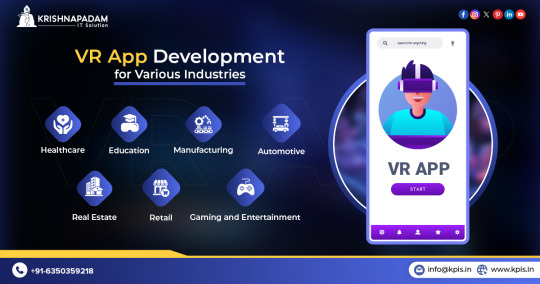
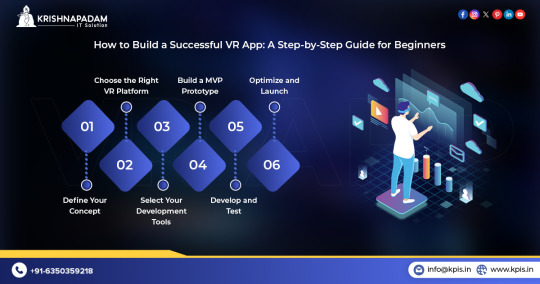


Whether you’re a beginner or an experienced developer, understanding the evolving landscape of VR technology will be crucial in crafting successful, engaging VR applications in 2025 and beyond. At KPIS, our team of experienced VR app developers and analysts integrate VR technology into your business after closely analyzing your industry, competitors, and target audience.
Have queries or want to know more about our virtual reality app development services or Trending Trends and Technologies of Virtual Reality (VR) App Development in 2025? Partner with us to bring your brand’s interactions to life and enjoy incredible success in the digital space.
#VR#virtual reality#VRMobileApp#VRApp#AppDevelopment#web development#app development#game development company#technology#internet of things#artificial intelligence#game development#application development#Hire App Developers#Software Development
0 notes
Text
Elevate Your Website’s Security with WordPress Security Services
Your WordPress website is a valuable asset that deserves top-tier protection. At Atcuality, we provide comprehensive WordPress security services to safeguard your site from cyberattacks and data breaches. Our team starts with an in-depth analysis of your website’s security framework, identifying and addressing vulnerabilities. We implement state-of-the-art measures such as malware scanning, brute force protection, and database encryption to enhance your site’s security posture. Additionally, we offer ongoing maintenance and support to ensure your site remains secure over time. With Atcuality, your website is not only protected but optimized for performance. Trust us to keep your digital assets safe and help you maintain a competitive edge in the online world.
#wordpress#website#web development#web design#web developing company#website development#web developers#ai generated#artificial intelligence#ai applications#iot#iot applications#iot development services#iotsolutions#iot platform#digitaltransformation#technologynews#techinnovation#augmented reality#augmented human c4 621#augmented and virtual reality market#augmented intelligence#metaverse#virtual reality#ar vr technology#amazon services#cloud server hosting#ssl#sslcertificate#ssl certificates
2 notes
·
View notes
Text
Immersive Learning: The Power of VR in Training - Atcuality
At Atcuality, we believe that learning should be as dynamic as the challenges you face. That’s why our VR-based training solutions are transforming how individuals and teams acquire new skills. With VR, we simulate real-life environments, enabling learners to practice, adapt, and succeed without the consequences of real-world mistakes. Our solutions are cost-effective, scalable, and highly engaging, making them ideal for industries like healthcare, construction, and corporate training. Experience the unmatched advantages of immersive technology and give your team the tools they need to excel. Step into the future of education with Atcuality.
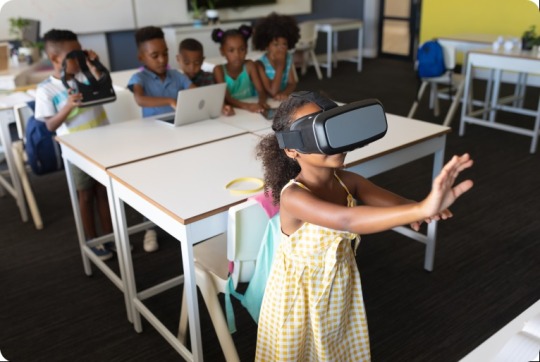
#seo services#seo marketing#artificial intelligence#seo company#seo agency#ai powered application#digital marketing#azure cloud services#iot applications#amazon web services#augmented human c4 621#augmented reality agency#augmented and virtual reality market#augmented intelligence#augmented reality#ai applications#ai app development#ai generated#technology#virtual reality#digital services#web development#web design#web developers#web developing company#website development#cash collection application#blockchain#metaverse#wordpress
3 notes
·
View notes
Text

The medical path is a long one and often, the road that is not chosen by many due to the resilience and courage required. The path to a medical career begins once a student has entered medical school, and the suffering begins.
1 note
·
View note
Text
The Evolution of AI: From Narrow Intelligence to General Intelligence
The evolution of Artificial Intelligence (AI) has been nothing short of remarkable, progressing from narrow intelligence to the potential for general intelligence.
Initially, AI was designed for narrow tasks, such as speech recognition, image processing, and basic decision-making. These AI systems were highly specialized but lacked the ability to perform tasks beyond their programming.
Early AI app development focused on automating specific processes, driving efficiencies in industries like healthcare, finance, and logistics. However, as AI research advanced, so did its capabilities.
Today, AI trends reflect a growing ambition toward creating Artificial General Intelligence (AGI), which aims to replicate human cognitive abilities, such as learning, reasoning, and problem-solving across diverse domains.
The transition from narrow to general intelligence presents challenges, including creating systems that can understand and adapt to new, unforeseen scenarios.
However, AI breakthroughs in machine learning, neural networks, and natural language processing have brought us closer to AGI. As AI continues to evolve, we can expect more sophisticated systems capable of reasoning, emotional understanding, and potentially self-improvement.
In summary, AI’s journey from narrow to general intelligence demonstrates the immense potential for revolutionizing industries and reshaping our future. Staying ahead of these AI trends will be crucial in harnessing AI's full capabilities responsibly.
#theintellify#software development#ai app development#ai trends#mobile app development#web application development#ar vr technology#augmented reality#virtual reality
0 notes